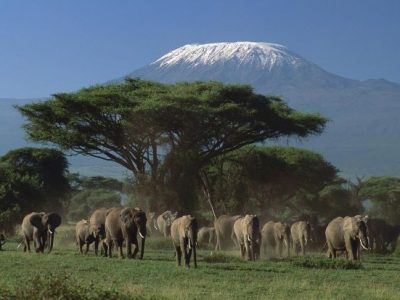As summer approaches, the siren call of national park adventures grows stronger. However, these iconic sites are bringing in unprecedented crowds.
In 2023, the National Park Service (NPS) reported over 300 million visits, a four percent increase from the previous year. This surge isn’t limited to famous spots; lesser known parks such as Congaree and Dry Tortugas are also experiencing record-breaking numbers. To manage the influx, park authorities are implementing innovative strategies to improve the guest experience.
(These are the 10 most popular national parks.)
From snagging the perfect stay to timing your bookings just right, we’ve got insider tips to ensure your national park vacation is nothing short of epic. Here’s what you need to know.
Best time to visit
Timing is crucial in planning your summer getaway, especially if you’re eyeing popular national parks. Finding affordable lodging and activities during the high season can be tricky.
During the shoulder seasons—early- to mid-spring and late fall—you can expect pleasant weather and a reprieve from the crowds, but there are a few trade-offs to consider. Some hotels and lodges might close during the off-season and reopen later in the year, potentially limiting your accommodation options. Additionally, parks at higher elevations, such as Glacier or Lassen Volcanic, may not have all their trails open and could require snowshoes or traction cleats to get around.
(Here’s why Yellowstone in the off-season is great for families.)
Arriving before sunrise has its perks, too. Typically, most visitors don’t arrive until mid-to-late morning, allowing you to enjoy attractions like Arches’ Windows or Delicate Arch with minimal crowds, provided you arrive early enough.
When permitted, exploring the parks in winter offers a unique perspective that few experience. Yosemite Valley, for instance, transforms into a winter wonderland—a sight cherished by photographers and nature enthusiasts alike.
Tony McDaniel, a Yosemite Mariposa County spokesperson, says the best way to plan a visit is to avoid taking a “checklist approach” to your visit.
“Slow down and immerse yourself in the destination,” McDaniel says. “There’s no place on earth like Yosemite National Park, and it’s best seen slowly and outside of a vehicle where you can fully embrace the sights, sounds, and smells.”
What parks require timed entry passes?
Timed entry reservations typically provide access within a two-hour window. The price of the pass, however, does not include the standard park entry fee. But, a separate timed entry permit is unnecessary if you already have campground reservations, a wilderness permit, or bookings for a pre-arranged, park-sponsored activity. Additionally, if you plan to stay inside the park for multiple days, only one timed entry reservation is required—just make sure not to leave the park during your visit.
Although these passes can reduce a trip’s spontaneity, NPS spokeswoman Kathy Kupper says they also lead to better park experiences.
“Visitors love the timed entry system,” Kupper says, “because it gives them increased confidence that they’ll be able to get in and get where they want to go.”
If you miss out on a timed entry reservation, don’t fret. Ditch your car and opt to walk or bike into the park at any time of day. Glacier National Park adjusts its timed entry program annually, including relocating entry gates beyond the visitor center, where guests can hop on a shuttle bus to access the park.
(Ready to plan your fall hike? Read this safety advice first.)
Arches: Timed entry reservations will be required from April 1 to October 31. The reservation system operates on a rolling basis. For example, June 1–30 bookings opened March 1; July 1–31 reservations opened April 1. A limited number of reservations will also be released at 7 p.m. MST the day before, providing some flexibility for last-minute planners to Utah.

Sunrise shines on the Garden Wall, a spine of rocks shaped by Ice Age glaciers in Glacier National Park, Montana. Photograph by KEITH LADZINSKI, Nat Geo Image Collection
Glacier: For travelers intending to drive along the iconic Going-to-the-Sun Road or head to North Fork, Montana, a vehicle reservation is mandatory between 6 a.m. and 3 p.m. from May 24 to September 8. Similarly, from July 1 to September 8, a reservation is required to access Many Glacier between 6 a.m. and 3 p.m. These reservations can be secured up to 120 days or approximately four months in advance, starting at 8 a.m. MST. Additionally, a limited number of next-day vehicle reservations will be released at 7 p.m. MST for those seeking entry on the following day on a rolling basis.
Mount Rainier: Two areas of this Washington State park—Paradise Corridor from the south and Sunrise Corridor from the northeast—will require reservations from 7 a.m. to 3 p.m., May 24-September 2, and July 4-September 2, respectively. Each corridor requires a separate vehicle reservation, valid for a single day per vehicle. Note that reservations are unnecessary when entering the park from a different entrance.
Rocky Mountain: Between May 24 and October 20, reservations are required for entry into this Colorado park. Two types of reservations will be available: one granting access to the entire park, including the bustling Bear Lake Road Corridor from 5 a.m. to 6 p.m., and another from 9 a.m. to 2 p.m. that excludes access to this corridor. Reservations for May 24 to June 30 can be secured starting at 8 a.m. on May 1. Subsequent reservation releases will follow, with reservations for July becoming available on June 1, and so forth.
Yosemite: Reservations are needed from April to October. On Saturdays, Sundays, and holidays (May 27, June 19, September 2, and October 14) from April 13 to June 30 and August 17 to October 27, reservations are required from 5 a.m. to 4 p.m. From July 1 to August 16, reservations are needed daily during the same hours.
(Discover the best day hikes in Yosemite National Park.)
What parks require a specific area pass?

Avoid the crowds at Cadillac Mountain and see the first sunrise in the country at Bass Harbor Head Lighthouse, in the southwest portion of Maine‘s Acadia National Park. Photograph by MAURICIO HANDLER, Nat Geo Image Collection
Acadia: In Maine, Cadillac Mountain Summit Road vehicle reservations are required from May 22 to October 27. About one-third of them can be purchased 90 days in advance, while the rest become available two days before, starting at 10 a.m. Reservations cost $6 and are sold only at https://www.recreation.gov/timed-entry/400000.
Great Smoky Mountains: While you don’t need a timed entry reservation to enter this Tennessee-North Carolina park, you will need a parking permit to stop for more than 15 minutes. Passes are $5 (daily), $15 (weekly), and $40 (annually). Permits can be purchased in person or online. Passes are good for one vehicle only.
(See fireflies magically light up this national park.)
Haleakalā: To park at Hawaii’s Haleakalā summit for sunrise, you’ll need a parking pass from 3 to 7 a.m. throughout the year.
Shenandoah: Visitors hiking Virginia’s Old Rag Mountain must obtain a $2 day-use ticket in advance from March 1 to November 30. Of the 800 tickets issued daily, 400 will be released 30 days in advance, with the remaining 400 released five days beforehand on https://www.recreation.gov/ticket/10088450/ticket/10088451.
Zion: You’ll need a timed permit to hike Angel’s Landing in Utah. Lotteries open for June-August hikes on April 1, September-November on July 1, and December-February on October 1. A limited number of next-day licenses will be available at 12:01 a.m. the day before. Hiking groups of up to six people can apply for a permit. Winning groups will be charged an additional $3 per person.
(Not a hiker? That’s not a problem at these eight national parks.)
Best alternatives to national parks
If you’re visiting in the summer, don’t have a reservation, and couldn’t get into the park early enough, you still have options. State parks and national forests surrounding official national parks often offer similar views but with few visitors.
(Go wild—and skip the crowds—at these 7 spectacular parks.)
For example, if you get shut out of Utah’s Bryce Canyon, you can always drive 15 minutes away to the picturesque Dixie National Forest. Instead of being shoulder-to-shoulder with thousands of other visitors on the trails, you’ll be almost entirely alone while overlooking nearly identical scenes.
Where to stay in or near a popular park
Most NPS campgrounds can be reserved six months in advance on a rolling basis through Recreation.gov, but the most popular sites, including Yellowstone’s Slough Creek or Watchman in Zion, can sell out within minutes. Even if you miss out, you still have plenty of options.
“For something similar to camping in Yosemite Valley, Housekeeping Camp or Curry Village are as close as you’ll get to camping, plus you don’t need to bring a tent,” says McDaniel. “In areas like Wawona, Yosemite West, and Foresta, there are cabin rentals that will still get you into the park. Outside the park, there are hundreds of more options in great locations and historic towns that are generally more budget-friendly and put visitors close to more dining options.”
(These historic lodges are the perfect way to see North America’s wild parks.)
Nearby national forests and Bureau of Land Management areas typically offer established campgrounds or free dispersed camping (areas outside a designated campground). Sites are generally first-come, first-served. Arrive at an established campground between 10 a.m. and noon to score a recently vacated site.
Apps like AllStays and sites like freecampsites.net and Campendium can help tremendously. Signal Mountain Campground in Wyoming’s Grand Teton National Park sells out almost immediately, but on a recent trip to the park, I found an incredible mountaintop dispersed campsite, in Bridger-Teton National Forest. The view of the Tetons was spectacular, made even better because the campsite was free.
Robert Annis is an outdoors travel writer. Follow him on Instagram.










